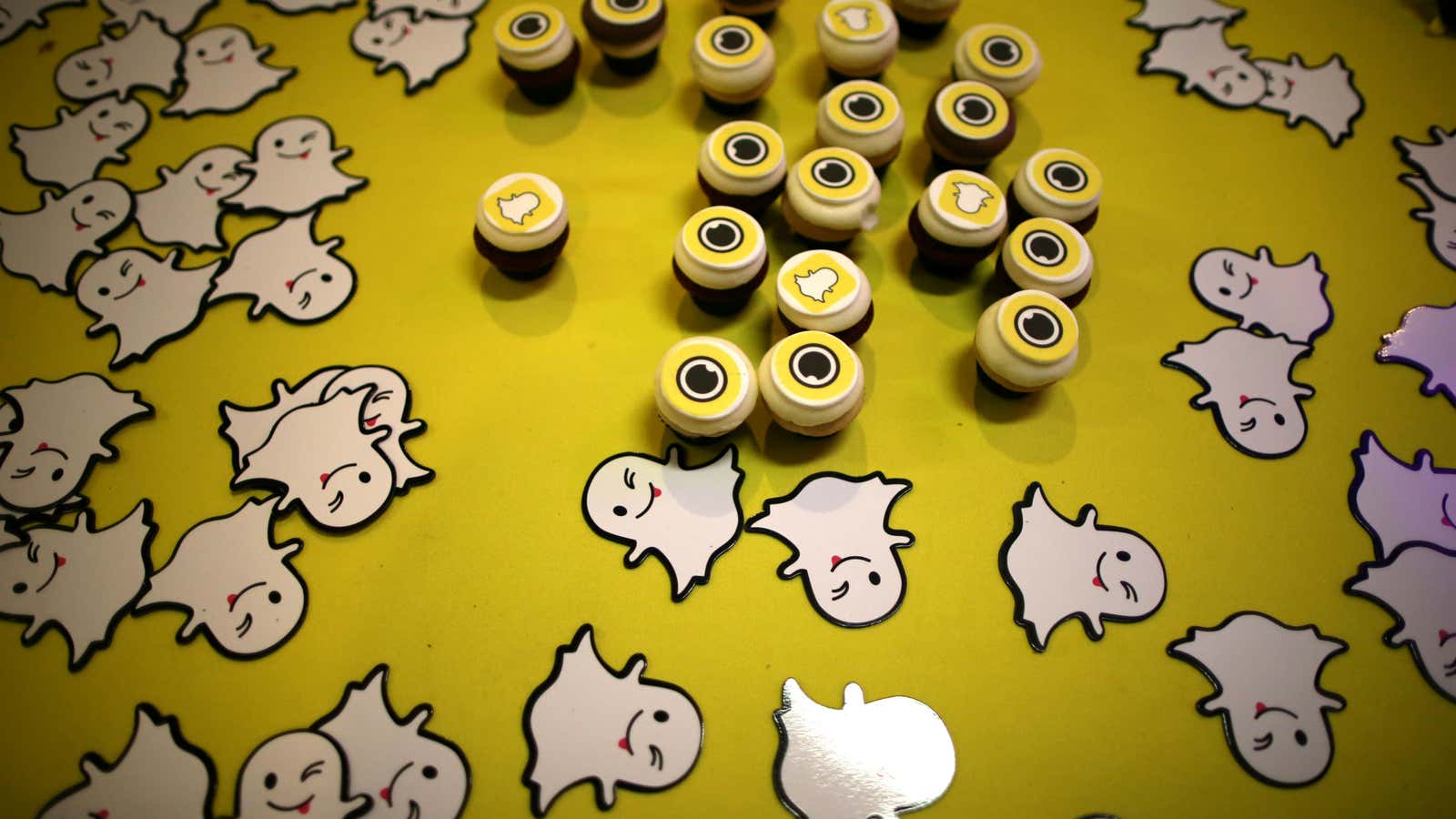Snapchat isn’t ready to enter developing markets. Or developing markets aren’t ready for Snapchat. Which one is it?
A lawsuit filed Jan. 04 and made public on April 10 alleges that Snapchat’s parent company, Snap, has no interest in expanding anywhere but rich countries. Anthony Pompliano, fired after a three-week stint at Snap, says he expressed concern about the app’s unimpressive performance outside the US at a meeting in 2015. His concern was allegedly met with a curt response from Snap co-founder Evan Spiegel: “This app is only for rich people,” he said, according to Pompliano. “I don’t want to expand into poor countries like India and Spain.” Pompliano alleges that his airing of the information internally wound up costing him his job. Snap says he was dismissed for poor performance.
By the time Snap attempted any damage control—the company denies the CEO ever said that—the disparaging remark had already gone viral. Infuriated Indians were leaving one-star reviews on the app store and raging on Twitter with calls to #UninstallSnapchat and #BoycottSnapchat. (Some of the wrath was misdirected at homegrown e-commerce company Snapdeal instead.) Hackers from India also threatened to leak the data of 1.7 Snapchat million users in retaliation.
Here’s something to consider: Spiegel’s words may have been poorly chosen, but Snap has good reasons for avoiding developing markets.
The Snapchat app works best in areas that have “cellular networks with large coverage areas,” Snap’s IPO filing says. “We therefore do not expect to experience rapid user growth or engagement in countries with low smartphone penetration.” Apart from access to the network, data charges also have to be low since Snap’s products “often require intensive processing and generate high bandwidth consumption by our users,” according to the filing. So countries with low bandwidth and high data charges are a no-go.
Devices are also part of the problem. The camera experiences created on Snapchat are tailored to high-end handsets. Most Snapchatters use iOS devices so Snap has even “prioritized development of their products to operate with iOS operating systems rather than smartphones with Android operating systems.” This vision does not align with growth prospects in developing nations. For instance, in India, nearly nine in 10 devices operate on Android, and iOS penetration is a minuscule 2%.
👻
Bleak future in India
Yet, Snap turning its back on India is not viable in the long run. The country, where four million people use Snapchat, is slated to nearly double its 432 million internet user base to 730 million by 2020.
Despite India being a tough-to-crack market, a number of American companies are persevering: Facebook, whose Internet.org initiative failed in the face of net neutrality, did not desert the market. After being reprimanded for selling flag-print doormats and flip flops with Mahatma Gandhi’s face on them, Amazon quickly pulled the products to keep India happy. Google is also making moves—its voice assistant converses in Hindi, it offers free wifi at railway stations, and it is crafting solutions to alleviate India’s sanitation crisis. Apple, too, wants a slice of the growing middle class.
As these tech giants derive ways to capture Indian audiences, Spiegel’s comment could mark the undoing of any future it could have had in an increasingly digital India.
👻
Trouble all around
In his lawsuit, Pompliano accuses Snap of inflating user metrics. He says daily active users for Snapchatters had not touched 100 million when Snap touted that it had. The user base had been growing at less than 4% at a time, the suit says, when the company was claiming double-digit month-over-month growth. The suit also alleges that the true registration-completion rate and user-retention rate after seven days was nearly doubled when promoted by the company. A spokesperson for the Los Angeles-based company told Recode that the lawsuit “is totally made up by a disgruntled former employee.”
Snap faces stiff competition from Facebook’s photo-sharing app Instagram. Snapchat stories, which launched in October 2013, had 161 million daily active users worldwide in February. Earlier this month, its clone, Instagram Stories, surpassed Snapchat with 200 million users each day, less than a year after it was introduced.
Snap’s IPO also seemed to go the Twitter route. Its opening price of $24 dropped by day three of trading. A string of analyst notes forecasting a rocky future seemed to have deflated the stock after its initial pop.
